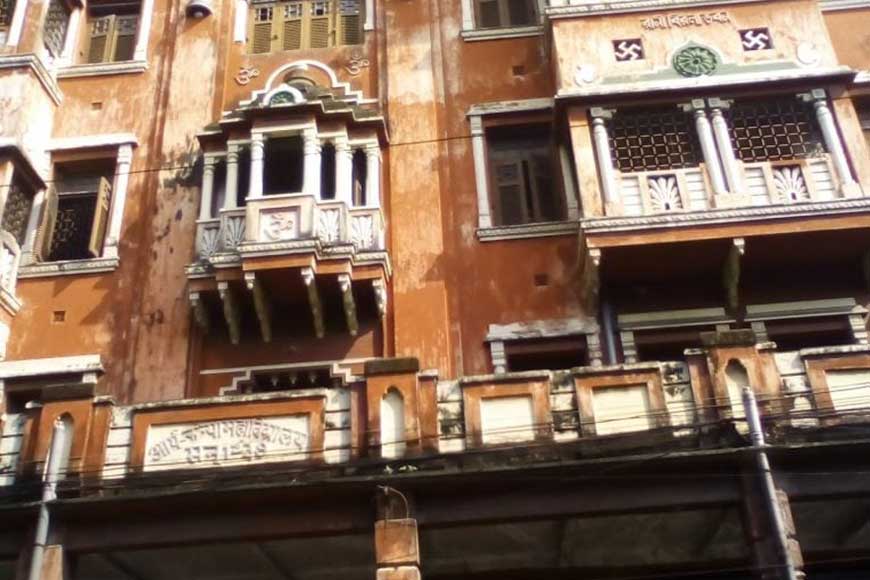The first Weaving School of Kolkata at Cornwallis Street

20 Cornwallis Street
House No 20 on Cornwallis Street was the premise of Arya Kanya Mahavidyalaya. Prior to the school, this house was the office of Banga Darshan after it was re-launched and also housed the Majumdar Library and Kantik Press. Later, Kantik Press vacated this house and shifted to No. 22, Sukiya Street. This lane was a literary lane with the office of Phanindranath Pal’s magazine, Jamuna housed at House No 22.
Even Bharatiya Sangeet Samaj was opened here around 1900. In 1905, National Weaving School was established here. On October 16, 1905, the day of the Partition of Bengal, an enormous protest rally was held on the field adjoining Pashupati Bose’s house in Baghbazar to raise funds for the spread and development of the Swadeshi handloom and boycott British goods. The meeting was organized to raise money for the national fund and set up indigenous handloom products. At the meeting, Rs 50,000 was raised and later Rs 20,000 more was added to the fund. With this money, the National Weaving School was established in House No. 209, on December 10, 1905. The supervisor of the school was dramatist Roy Dinabandhu Mitra Bahadur’s grandson, Babu Prabhas Chandra Mitra.
In 1905, National Weaving School was established here. On October 16, 1905, the day of the Partition of Bengal, an enormous protest rally was held on the field adjoining Pashupati Bose’s house in Baghbazar to raise funds for the spread and development of the Swadeshi handloom and boycott British goods.
Celebrated Barrister Taraknath Palit and others participated in this project enthusiastically. About 400 weaving machines were bought. A few indigenous looms were made and a fleet of Hattersley loom were added to the existing ones. About 400 boys from respectable families took admission here to learn weaving. They thought they would be able to earn Rs 2 or three daily by manufacturing thread from the spinning wheels and weaving clothes. But after four months, during a test, it was found that those who made thread from spinning wheels, could not earn more than two annas per day and even those who had mastered the art of weaving could not make more than eight annas per day. So, all the trainees left the institution after four or five months.
Celebrated Barrister Taraknath Palit and others participated in this project enthusiastically. About 400 weaving machines were bought. A few indigenous looms were made and a fleet of Hattersley loom were added to the existing ones. About 400 boys from respectable families took admission here to learn weaving. They thought they would be able to earn Rs 2 or three daily by manufacturing thread from the spinning wheels and weaving clothes.
The spinning wheels and handloom machines lay unattended in the school. A second attempt was made by the organizers to manufacture carpets, but the project failed. Finally, the school had to be shut down. A vast amount of money, Rs 30,000, to be precise, was spent to open the institution but only about Rs 400 or 500 could be recovered from selling the spinning wheels and the handloom machines.
Later, Gnyanendranath Kumar Das, the author of Bangsha Porichoy lived in this house. He edited three magazines from his office here. The magazines were: Prajapati, Majlish and Srirampur. The office of the magazines and the printing press were all accommodated in this house.
(To be continued)











